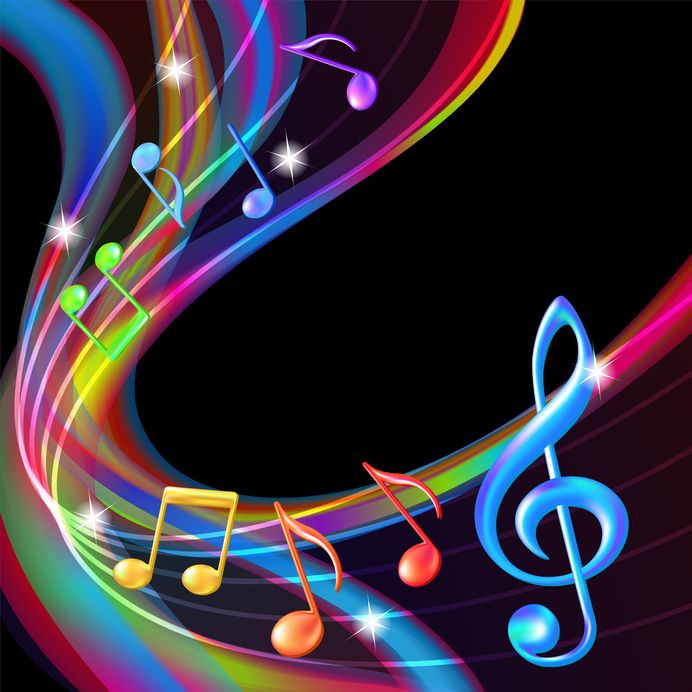Daoism is one of the cornerstones of Chinese Medicine and Acupuncture. The philosophy of Daoism emphasizes the concept of living in harmony with oneself and the life around oneself. Ancient Daoist believed that this harmony was a “music” which everything plays, including the human body.
We can see the rhythm of music in life processes. From the simple pulsations of a single-cell to our own rising and falling breath, life has a rhythm. Each rhythm falls into a cycle. The rhythms and cycle allow life to refresh itself and maintain harmony. The cycles of day and night allow us activity and the ability to regenerate. The cycles of the seasons ensure the earth has the ability to sustain life.
For all of life, the rhythms and cycles help create music that immerses us. These rhythms and cycles are able to have an effect on our biological processes.
Entrainment helps define one aspect of how these rhythms affect us. Entrainment states that the powerful rhythmic vibrations of one object will cause less powerful vibrations of another object to lock in step and oscillate at the first object’s rate.
Entrainment has to do with conservation of energy. Nature finds it more economical, in terms of energy, to move in step with each other. Birds flock together for their migration, moving in step with each, in order to conserve energy. In our lives, it is easier to go with the flow than against the flow.
The concept of sound entrainment is an active concept. Someone actively introduces another rhythm to change the current rhythmic pattern of an object.
After a long, stressful week we may go home to listen to some relaxing music. After listening to the music, we find our mood and behavior more relaxed and “in-tune” with life. Through introducing another rhythm, our natural biological vibrations are actively changed to the vibrations (the frequency or rhythm) of another rate. We might notice our breathing is slower and deeper, our heart rate has slowed.
An interesting illustration of entrainment can be seen in Itzhak Bentov book “Stalking the Wild Pendulum”. If you have a room full of pendulum-type grandfather clocks and start the pendulums in motion at different times, they will all swing differently. However, if you walk out of this room and come back the next day, you will find that all the pendulums are swinging together at the same rate. This locking in step of rhythms is entrainment.
For Ancient China, music therapy was focused on harmonizing the elements within the organs of the body. As Ancient China didn’t have our language, they used the language of symbolism and abstract thought to convey importance and meaning. Sometimes, this ability to reference through abstract thought rings much truer and gives more clarity than our common terms.
An example in Traditional Chinese Medicine is the ancient chart that depict the internal organs. This chart is called the “Chart of Inner Lights” or “The Chart for Visualizing the True Ones”. Within this chart, we see the Kidneys, the Heart, the Liver, the Spleen, and the Lungs. Five key organs which are critical for our lives and without their function, life may be impossible to sustain.
If we go back to the symbolism of “Inner Lights”, light allows for illumination, daybreak, dawn, awareness. When used as a verb, light sets on fire or kindles, gives direction or guides, it also enlivens. Through this symbolism, we can began to grasp the importance of these organs much more than if someone told us the heart is a muscular organ that pumps blood through the blood vessels by repeated, rhythmic contractions.
These five organs held much respect and encouraged much study due to their importance to our survival. Thousands of years ago, Chinese Medicine was able to identify that each of these organs had it own rhythm and energetic flow. Thousands of years ago, they were able to identify that the heart controlled the blood, the kidneys the urine, the lungs the flow of oxygen, etc. and all without the need of millions of autopsy’s. I think that is the part that continues to disarm me.
Yet, within each of the organs, Chinese Medicine identified a specific pathway, unique rhythm and cycle. Each of these organs has a music that is specific and unique to it.
Ancient Daoism identified their rhythm and attached a healing sound to each of these five organs and elements.
| Sound | Note | Element | Organ |
| Gong | C | Earth | Spleen |
| Shang | D | Metal | Lungs |
| Jue | E | Wood | Liver |
| Zhi | G | Fire | Heart |
| Yu | A | Water | Kidneys |
So, next time you’re listening to music which you find enjoyable, think about the scale it was written in. You may find the scale and your Chinese Medicine diagnosis have something in common. They may both be focusing on healing the same thing.

